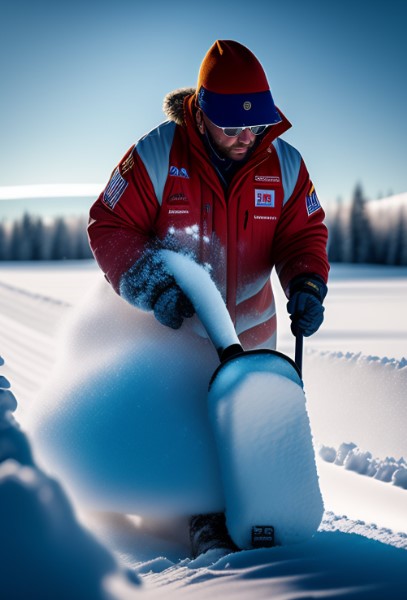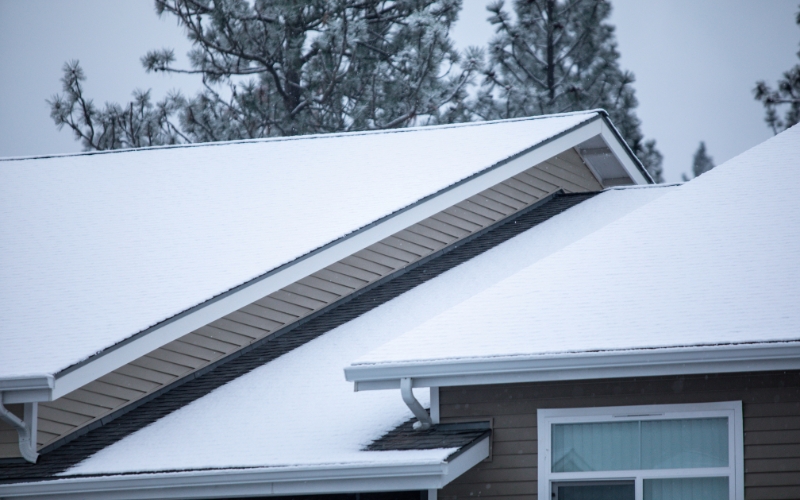Snow on your roof may look picturesque, but it can be dangerous if it accumulates beyond a certain weight and thickness. It is especially true if you reside in an area prone to snowfall, as it can lead to roof leaks and even the collapse of your home.
If you need to remove snow from your roof, there are several methods you can use, including ropes, wires, avalanches systems, rakes, shovels, DIY tools, or steamers. The approach you select will depend on the snow on your roof and the type of snow you’re dealing with. The steps to safely remove snow from your roof include tips, precautions, and preventative measures.
1) Remove Snow from the Roof with a Rope
Using a rope to remove snow from your roof is inexpensive and straightforward, as the necessary tools are likely available in your home. Here are the steps to safely remove snow from your roof using a rope:
- If the snow pile is narrow, toss the middle section of the rope over the snow pile while holding onto both ends of the rope.
- For wider piles on taller roofs, tie one end of the rope to a weight and use a ladder to climb onto the roof. Hold the rope’s end without the weight and toss the weighted end to the ground. Then, wrap the rope around the edge of the snow pile and climb back down the ladder.
- Hold onto both ends of the rope and move back, pulling the snow off the roof. Alternatively, you can have someone on the ground pull from the other side of the too-wide pile.
- Repeat the process until you are confident that no excess snow is left on the roof.
2) Remove Snow from the Roof with a wire
Using wire to remove snow from your roof is similar to using a rope. The stiffness of the wire allows for better control during the snow removal process. This method is especially useful for pitched or lean-to roof types and is sometimes called wire-cutting snow.
Below are the steps to remove snow from your roof with wire:
- Find a long piece of wire that is long enough to cover a significant portion of your roof.
- Throw the middle of the wire directly over the pile of snow on your roof while holding onto both ends of the wire.
- Move backward while pulling on both ends of the wire to pull the snow off the roof.
- Repeat the process until you are confident that the snow on your roof is light.
Raking Method
It is a popular and safe way to get the job done. This method effectively removes snow from the roof without causing damage or injuries. It involves gently pulling the snow off the roof using a specialized pole, usually around 20 feet long.
Here are the steps for using the raking method to remove snow from the roof:
- Check that the roof is strong enough to withstand the rake and there are no parts that the process can easily damage.
- If the roof is out of reach, prop a ladder against it and fasten it in place to avoid injuries.
- If you can reach the roof from the ground, stand a few feet away to avoid injuries from falling snow. Wearing protective headgear is also recommended.
- Use an aluminum rake about 20 feet long.
- Slowly pull the snow starting from the area closest to you and work your way towards the area further away.
- Cut off smaller chunks of snow than the rake can take to avoid injuries to people and damage to items below the roof.
Shovel Method
Shoveling snow from the roof is risky and should be avoided if you don’t have experience climbing roofs. It involves climbing a ladder and using a shovel to remove the snow from the roof. This method is particularly dangerous as it involves a high risk of falling off the ladder or damaging the roof by hitting a weak spot with the shovel.

Here are the steps for shoveling snow off the roof in bullet points:
- Place a ladder at one end of the roof and anchor it.
- Climb the ladder with a shovel in one hand, being careful not to fall off the ladder.
- Once at the top, move at least 3 feet away from the roof’s edge.
- Start shoveling the snow from the roof, beginning with the area farthest from the end of the roof where you propped your ladder.
- Maintain a rim of snow at the roof’s edge at all times, as it will be a safety measure to prevent you from falling off the roof.
- Only remove the rim of the snow last once all other snow has been cleared.
- Disembark from the roof once you’ve finished shoveling.
- Do not walk across the roof when finished, as there will no longer be a rim of snow to keep you from falling off.
Tips to Get the Snow off a Roof
- Consider weather patterns before removing heavy snow. Wait until temperatures rise to avoid injuries.
- Removing snow from the ground is the safest method, as climbing the roof increases your chances of injury.
- Keep snow accumulation on the roof to no more than one foot, and remove only a portion of the snow at a time to avoid damaging the roof.
- Be cautious of electrical lines and wires, and call in an expert if needed.
- Stabilize or anchor the ladder on the ground and roof to avoid falling off the ladder or roof.
- Leave 3 feet of ice on the edge as a safety net in case of a fall. Remove it last, or use a roof safety harness or ropes/lifeline.
- Avoid climbing on garages or buildings with few walls as they can collapse under the weight of the snow.
- Stay alert to where the snow falls to avoid injury, especially on steeper roofs where ice falls faster.
- Remove snow from the roof after each storm during periodic storms to prevent buildup. Use plastic shovels or rakes instead of metal to avoid damaging the roof.
Conclusion
There are several ways to remove snow from your roof, including rope, wire, raking, and shovel methods, each with advantages and disadvantages. The wire method is quick and affordable but can be unsafe and strenuous. Raking is effective and safe, but you must ensure your roof is strong enough and take precautions to avoid injury. The shoveling method is the best option for flat roofs. Regardless of your chosen method, it’s important to prioritize safety and take the necessary precautions to avoid injury to yourself and damage to your property.

